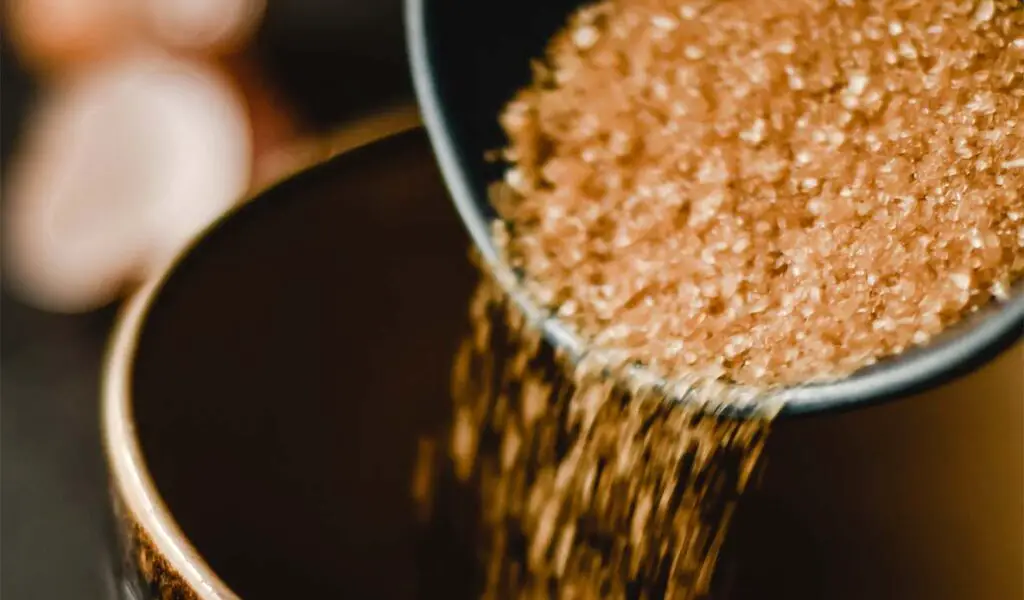Are you curious about the difference between brown sugar and cane sugar? Look no further! In this article, we will explore the distinctions between these two natural sweeteners. From their source of production to their nutritional composition, we’ll cover it all. Plus, we’ll get into whether you can easily replace brown sugar with cane sugar in your recipes. So, if you’re ready to expand your knowledge on these sweet alternatives, keep reading!
Source And Production
When it comes to the source of production, you may be wondering where brown sugar and cane sugar come from. Well, the answer lies in the process of extracting sugar from sugarcane. Cane sugar is derived from the juice of sugarcane plants, which are grown in tropical regions such as South America, Southeast Asia, and the Caribbean. The sugarcane stalks are harvested and the juice is extracted through crushing and pressing. This juice is then filtered, boiled, and evaporated to form raw sugar crystals. On the other hand, brown sugar is actually white sugar that has molasses added back to it. The molasses gives it a slightly darker color and a richer flavor. So, while cane sugar comes directly from sugarcane juice, brown sugar is a product of further processing.
Main Differences
To understand the main differences between brown sugar and cane sugar, let’s get into their composition and taste profiles.
- Composition: Brown sugar is made by adding molasses to refined white sugar, creating a moist and sticky texture. Cane sugar, on the other hand, is simply the result of extracting and refining the juice from sugarcane plants, resulting in a fine, granulated texture.
- Color: Brown sugar has a rich, caramel-like color due to the presence of molasses, while cane sugar is typically white or off-white.
- Taste: Brown sugar has a slightly stronger flavor and a hint of molasses, giving it a deeper and more complex taste compared to the milder sweetness of cane sugar.
Nutritional Composition
Now let’s examine the nutritional composition of brown sugar and cane sugar. When it comes to calories, both types of sugar contain the same amount, which is about 16 calories per teaspoon. Brown sugar however, contains more minerals such as calcium, iron, and potassium, thanks to the molasses content. On the other hand, cane sugar is more refined and stripped of said minerals during processing. It’s important to note that while brown sugar may offer a slightly higher mineral content, the difference is minimal, and both sugars should still be consumed in moderation as part of a balanced diet.

Culinary Uses
For a variety of culinary uses, both brown sugar and cane sugar can be utilized in baking and cooking.
Brown sugar, with its slightly molasses flavor and moist texture, is commonly used in recipes like cookies, cakes, and pies to add a rich, caramel-like taste. It also contributes to the browning and moistness of baked goods.
Cane sugar, on the other hand, is a more refined form of sugar and is often used in recipes that require a milder sweetness, such as custards, meringues, and delicate pastries. Its fine texture makes it dissolve quickly, making it ideal for sweetening beverages like coffee and tea.
Both cane sugar and brown sugar are widely used as topping for desserts, and both can be pretty versatile in the kitchen, allowing you to experiment with different flavors and textures in your culinary creations.
Can You Replace Brown Sugar With Cane Sugar?
If you’re wondering whether you can substitute brown sugar with cane sugar, the answer is yes. While they may seem similar, there are some small differences to consider. Here’s what you need to know:
- Color: Brown sugar has a distinct caramel color due to the added molasses, while cane sugar is close to white.
- Flavor: Brown sugar has a richer, deeper flavor with hints of molasses, while cane sugar has a milder and cleaner taste.
- Moisture Content: Brown sugar contains more moisture, making it slightly denser and stickier than cane sugar.
When substituting brown sugar with cane sugar, keep in mind that the flavor profile and texture of your recipe may slightly change. To mimic the flavor of brown sugar, you can add a small amount of molasses to your cane sugar mix. Cane sugar or white sugar plus molasses work great as substitutes for brown sugar in recipes!
Main article photo: Monika Grabkowska


